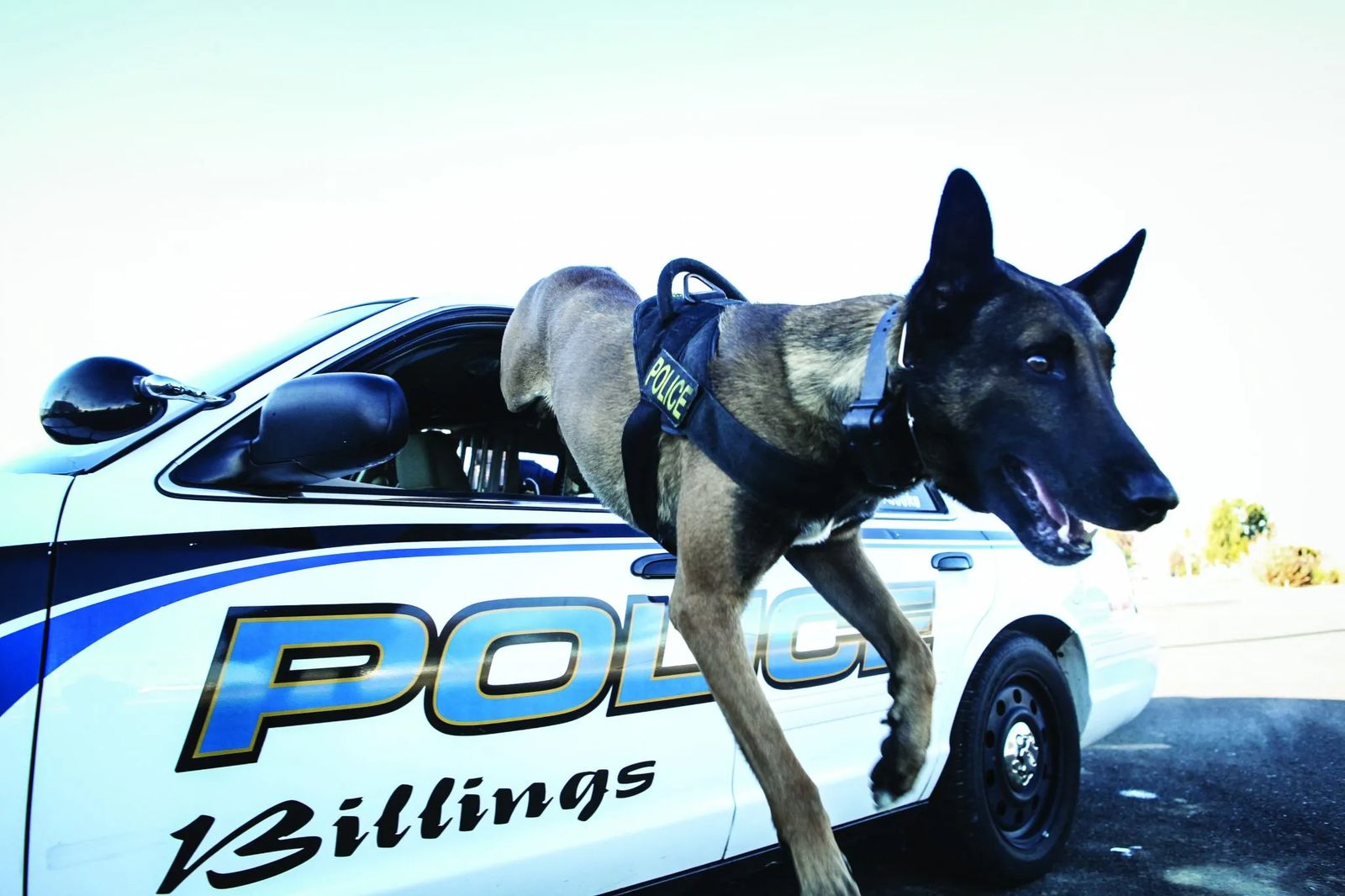
Four Legged Heros
These helping paws save, search & comfort
Dogs are called man’s best friend for a reason. They listen without judgement. They comfort without an agenda. They are hunters, workers, comrades and companions. And they are all of these things in exchange for a mere bit of food and water.
But to some owners, their dogs are even more.
There is Kooko, the police dog, who helped get more than 40 illegal firearms off the streets of Billings. And Beartooth — who traverses mountains to find lost hikers, led by only his nose. Then there are Ellie, Lucy Lu, Sierra, Quigley and Yuki — canines trained to provide a shoulder to cry on under the most extreme and tragic circumstances. And finally, Hawkeye and Liberty, who aid wounded warriors in their transition back to civilian life. Heroes come in all shapes and sizes — these just happen to be four-legged.

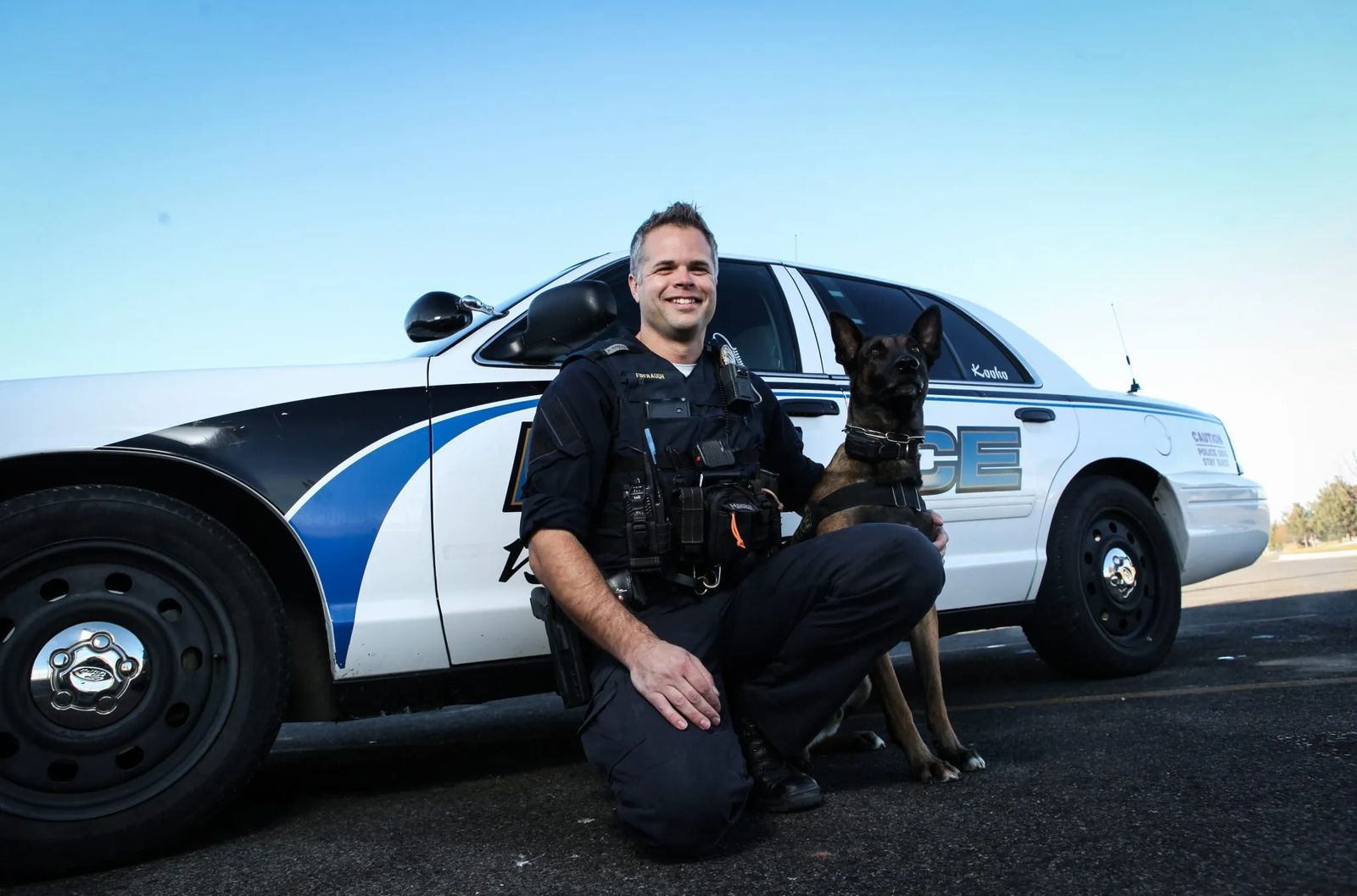
BILLINGS POLICE DEPARTMENT K-9 UNIT
Kooko, a 3-year-old Belgian Malinois, is an imposing sight. His piercing yellow eyes stand out against his dark brown coat that covers a body that is all muscle. When his handler, Officer David Firebaugh, flashes a toy in his direction, Kooko is off like the bullet from a gun. He leaps up and catches the plaything firmly in his mouth, at the same time, revealing an impressive set of teeth.
Sometimes he uses them for more than play.

Kooko is an integral part of the Billings Police Department. He is trained to sniff out narcotics and to apprehend suspects. In the mere year that Kooko has been on the streets, he and Firebaugh have already located 40 firearms, $90,000 in drug money, seven pounds of methamphetamines and assisted with the recovery of an additional six pounds. However, Kooko has yet to drag a suspect out of hiding using his teeth in what is known as a street bite. But Firebaugh says Kooko’s mere presence has been enough to sway criminals into revealing themselves.
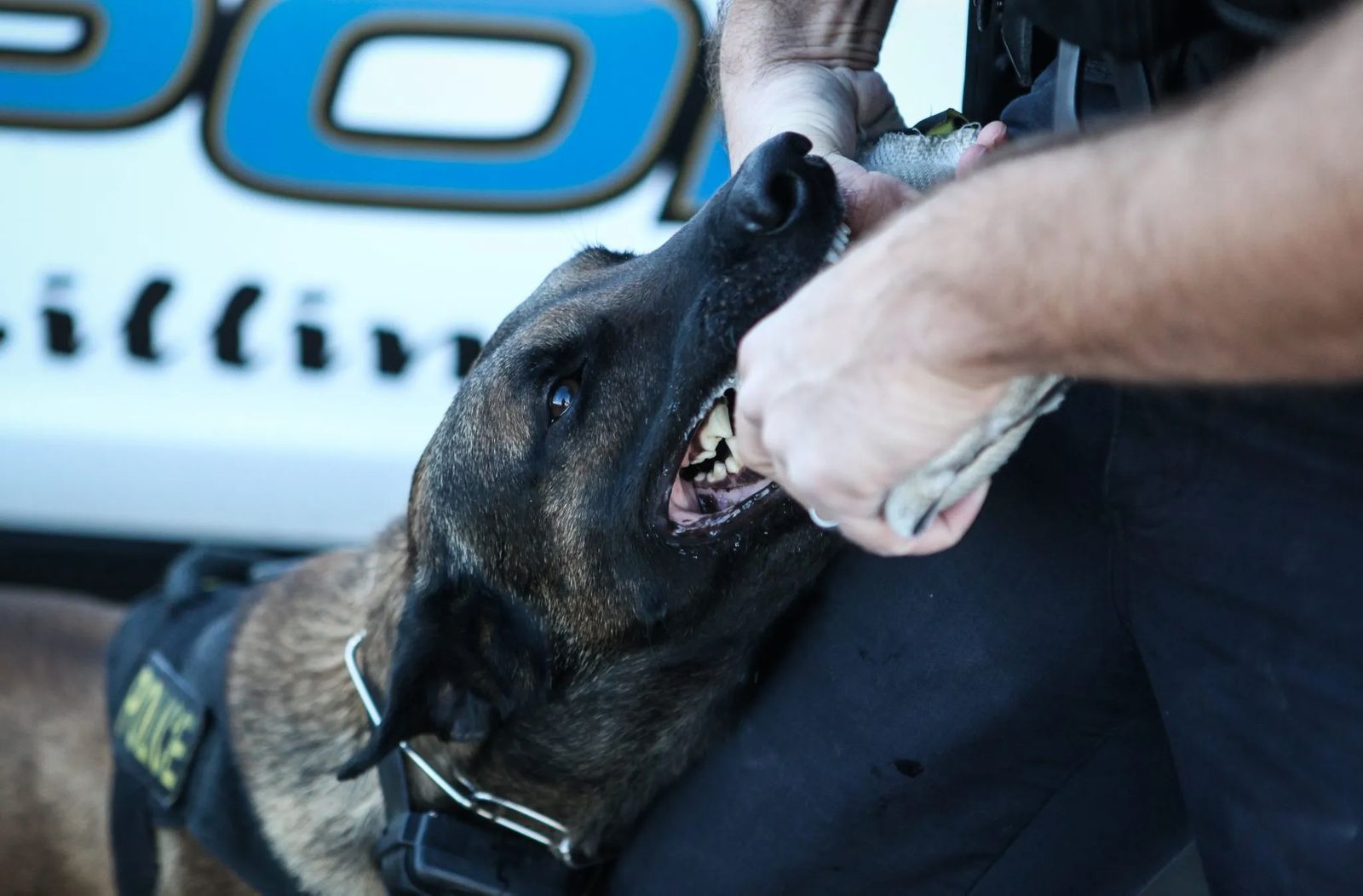
“He’s accomplished his goal without ever having to actually hurt anybody or go bite them, so he’s been very valuable,” Firebaugh says of Kooko, who is one of four dogs in the department’s canine unit.
Firebaugh recalls one incident where he was walking toward a house with Kooko where a suspect was hiding, when the man decided to show himself. “The guy came out and says, ‘Hey, I’m done, I give up. I don’t want anything to do with the dog,’” Firebaugh says. “Getting bit by a dog is kind of a universal human phobia — it’s like spiders or snakes. You can point a gun at somebody and they’ll give you the finger and yell at you because they don’t have an expectation that you’re actually going to shoot them, but when the dog team comes out, they believe that you’ll actually send the dog on them.”
Firebaugh says he views dogs as both a powerful and underutilized resource. “You can help your base patrolmen all the way up to your elite, undercover special operations people within the department,” he says.
But there are challenges in working with canines, too. For one, Kooko came with a $9,000 price tag, although Firebaugh says the best-trained animals can fetch up to $60,000. Like many police or military dogs Kooko was imported from Europe and arrived with basic training and foreign language commands. Police dogs like Kooko are often trained in a foreign language, and sometimes a mix of languages, to ensure they respond only to their handler.
And while Belgian Malinois are prized for their high-drive and low susceptibility to hip and back problems, they also demand a great deal of attention. Dropping Kooko off at a kennel is not an option due to his potential for being dog-aggressive, Firebaugh says.
But the handler maintained that his new partner has not only pushed him to be a better officer, but has proven to be a great asset to the department.
“To participate in major cases you’ve got to have your A-game on, so it has made me better at what I do,” Firebaugh says of working with Kooko. “When used the right way, what a powerful tool for good.”
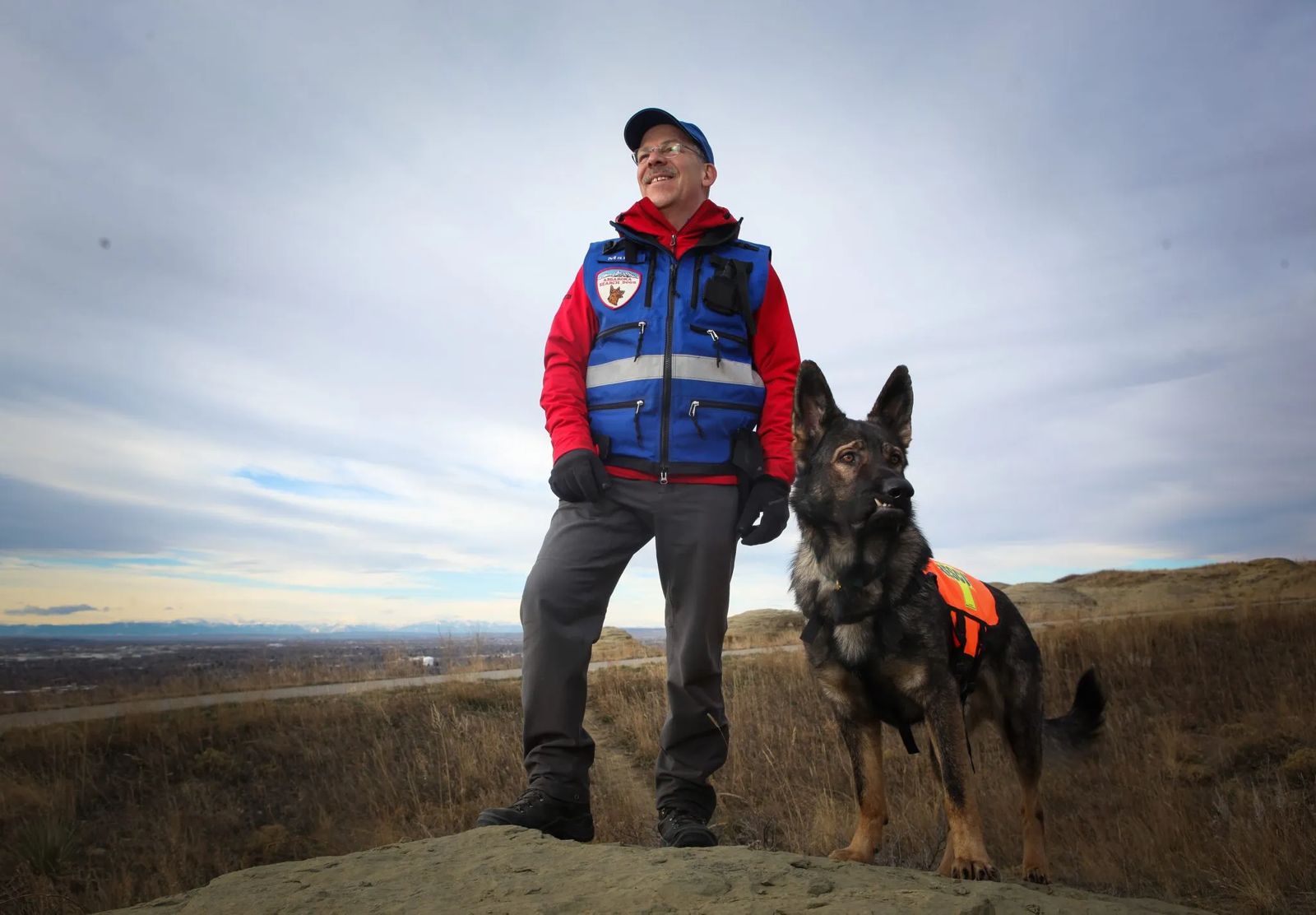
ABSAROKA SEARCH DOGS
Beartooth’s nose is a powerful tool. In ideal conditions, it can detect human scent up to a mile away – a useful ability when it comes to search and rescue. Beartooth is one of seven canines in Absaroka Search Dogs — a non-profit organization of volunteers committed to rescuing lost outdoorsmen. Handler Mark Polakoff, helped found the organization back in 1986 as a way to give back to the outdoor recreation community. At the time, they were the first search dog outfit in the state, which currently boasts a little more than two dozen teams.
Members own and train their dogs and work to obtain certifications in various disciplines ranging from avalanche and water search to cadaver and scent trailing. At minimum, search dogs must be able to track a scent that has been aged for at least four hours for one mile.
Good search dogs have high drives — in other words, are motivated to achieve a reward and please their handler. Polakoff says the bond between handler and dog is paramount.
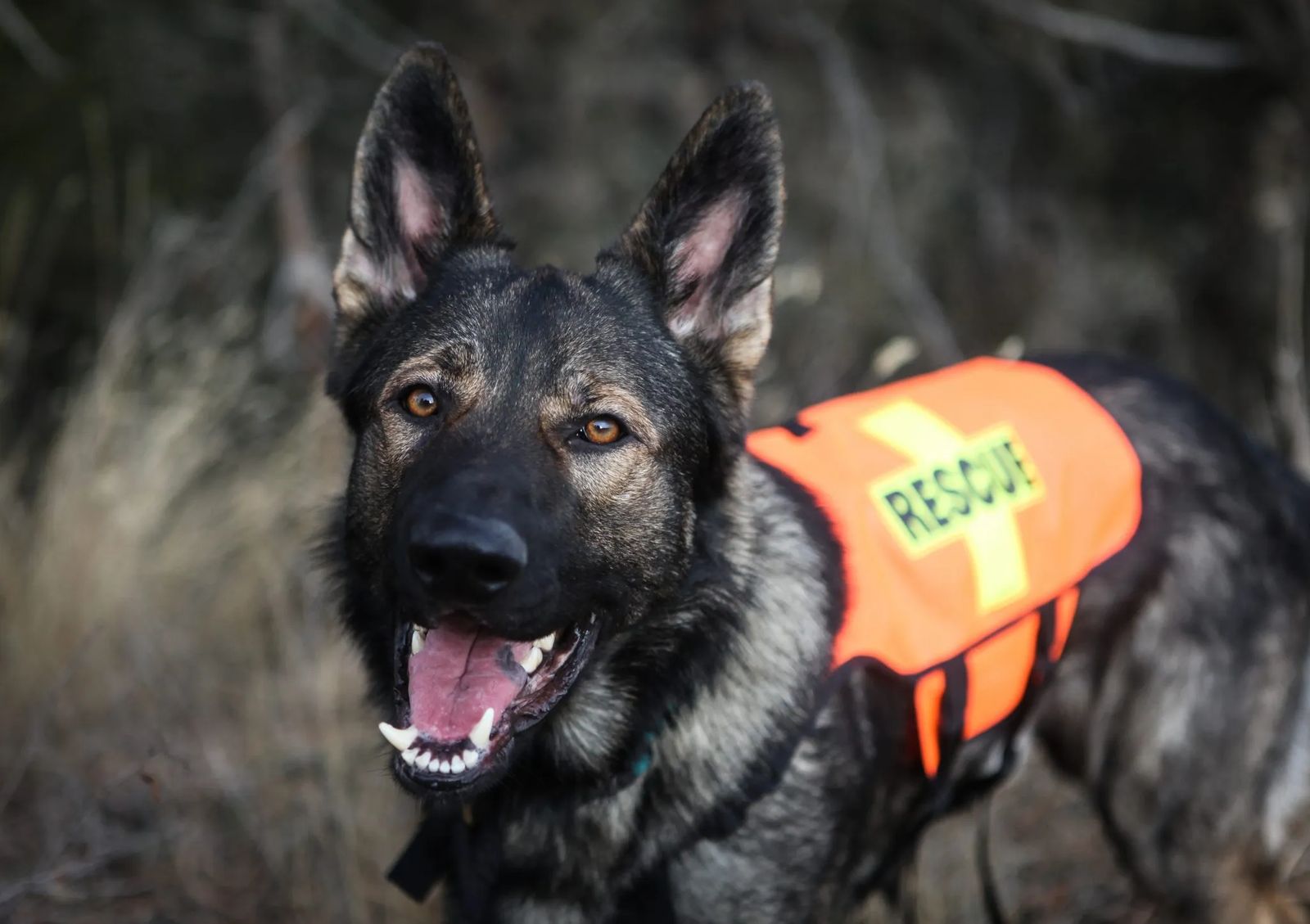
“The reason it’s important is we ask the dogs to do things that they may not ordinarily be comfortable doing,” he says. Search dogs will accompany their handlers in environments that are unusual to them such as riding on a chairlift or the back of a snowmobile, traversing unsteady terrain or venturing into confined spaces.
In order to prepare them for the myriad of duties, training begins at the puppy stage, Polakoff says. The owner will shuffle to leave a continuous trail of scent for roughly 20 feet, rewarding the pup with food when he reaches the end. As the puppy grows, the distance is increased and the food phased out. Once matured, many handlers prefer to reward their dogs with a play treat, such as a game of fetch or tug of war, he says.
“It’s a huge time commitment. I pretty much do some sort of training every day that I’m not working,” Polakoff says. “It may be anything from hiding scent articles in the empty lot next door which might take me 20 or 30 minutes, or meeting up with some other handlers and spending the day training together.”
But all that training pays off in the field.
In 2012, Polakoff and his other search dog Tashi, responded to a call for two missing hikers in Carbon County. The women had become separated from their group and ended up spending the night outdoors dressed in shorts and tank tops. Multiple dog teams were deployed, but it was Tashi that picked up the first scent trail. The scent died off after half a mile but it was enough to give the searchers a direction to push forward in. The women were located, cold but alive, roughly four hours after search teams had begun looking. “The young gal from Billings, her parents were at the trailhead,” Polakoff says of one of the hikers. “They had been missing for over 24 hours at that point and to watch the reunion — that was pretty gratifying.”
However, not all calls result in a happy ending
Nine years ago, Polakoff and Tashi were called to locate an elk hunter who had gone missing in the Bridger Creek area. It was mid-November and an early season storm had blanketed the region. Tashi tracked the scent for a staggering six and a half miles, working continuously for eight hours. They found the man at 11 p.m. that night. He was soaked to the bone and unconscious, but Polakoff could detect a faint heartbeat. They transported the man out of the area and onto a helicopter but unfortunately, not in time. Once the flight nurse took over, the man was declared dead.
The call is one that brings up mixed emotions for Polakoff.
“I was really torn because from a search and rescue standpoint my dog and I performed so exceptionally. This was a 24-hour-old track. Our certification testing doesn’t go that far out,” Polakoff says. “But on the other hand, the medical side was terrible. It wasn’t at all what we had hoped.”
But at the end of the day, good calls and bad, Polakoff remains committed to training dogs for search and rescue.
“Dogs have the ability to scent and sometimes those scent clues are there to be utilized, picked up on when there may not be visual clues available,” Polakoff says. “We really see it as a collaborative effort.”
For more on Absaroka Search Dogs, click HERE to visit the organization's website.
 Mary Martin with Ellie, Nancy Dodd with Yuki, Lyn Findley with Sierra, Sheila Ruble with Quigley, Tanya Vaught with Lucy[/caption]
Mary Martin with Ellie, Nancy Dodd with Yuki, Lyn Findley with Sierra, Sheila Ruble with Quigley, Tanya Vaught with Lucy[/caption]
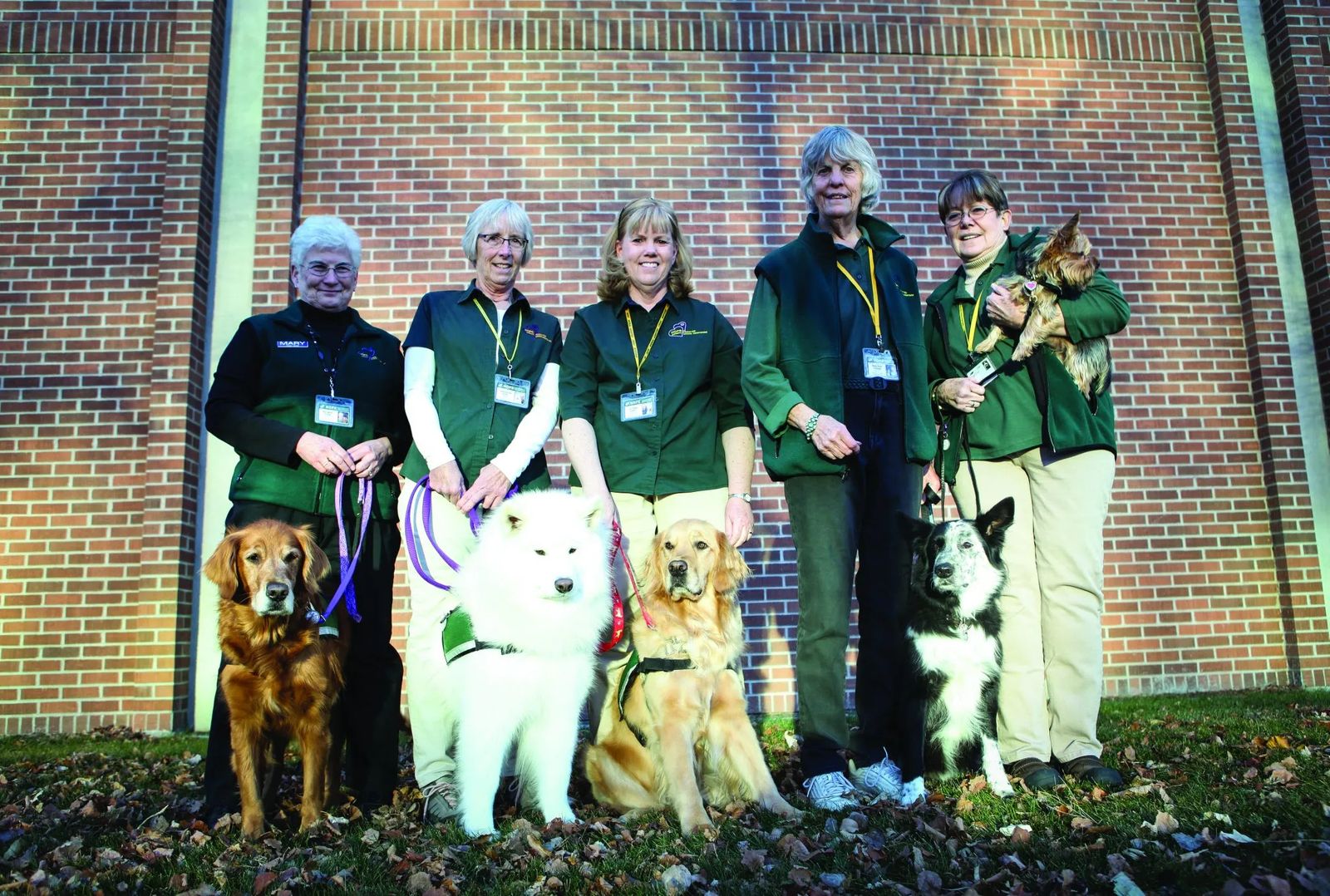
HOPE ANIMAL-ASSISTED CRISIS RESPONSE
HOPE dogs are there in the worst of times – those unimaginable moments that seem too awful to be real: School shootings, the death of a parent, floods or fires that rip through communities.
It is a simple thing, to pet a dog, but sometimes the smallest of comforts can make all the difference.
HOPE Animal-Assisted Crisis Response deploys teams of comfort dogs and their handlers to crises around the country at the request of law enforcement or school administration. Dogs are brought in to help people reduce stress during grief and tap into their own coping skills.
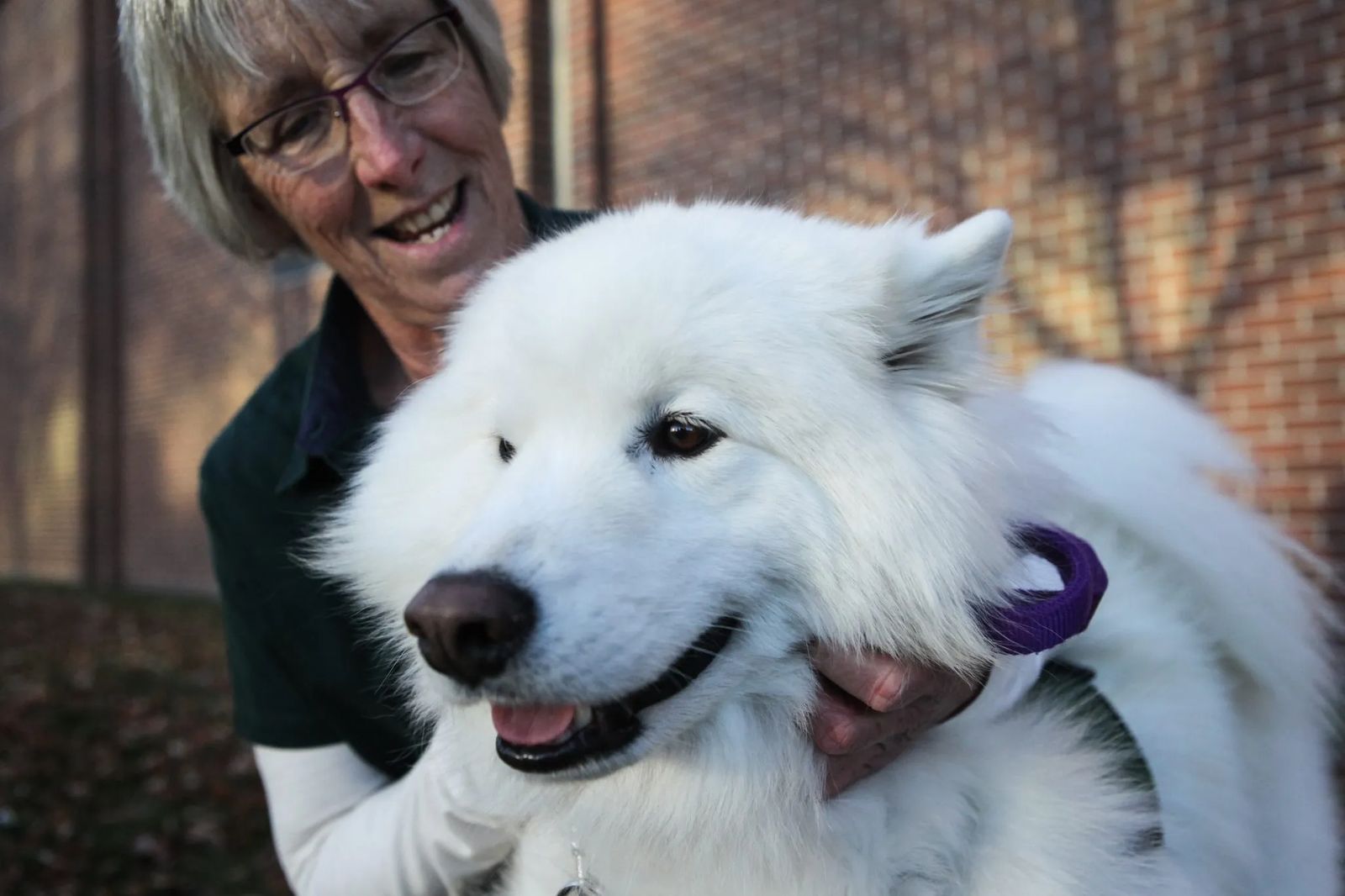
“We don’t heal anything. We just help to provide that comfort, that encouragement that they need in that particular time period,” says HOPE AACR regional director Mary Martin.
Pet therapy isn’t a new phenomenon, she says. However, since 9/11, responders have realized that traditional therapy dogs are not suited for the unpredictable environments surrounding traumatic situations. They need more training.
HOPE dogs must pass through an extensive training process to be considered qualified for crisis response. Dogs must have at least one year’s experience in traditional pet therapy, such as visiting a nursing home, before they are even considered for admission. Then the dogs undergo a three-hour screening process and are finally invited to one of the six three-day workshops held around the country.
“We recognize that the work we do is stressful,” Martin says. “You do have to be on, and you do have to have a neutral-enough dog that can handle those stressors and still be in tune with its owner.”

HOPE dogs have deployed to a multitude of national events such as the Virginia Tech shooting, the Washington Naval Yard shooting, and more recently, the shooting at the Colorado Planned Parenthood facility. Locally, teams have responded to the Bozeman downtown explosion in 2009 and the Butte airplane disaster that same year. Currently much of their work revolves around the school system.
Martin recalls one deployment to a third-grade classroom where the students had lost their teacher. The entire class was sobbing but when Martin, and another dog team entered the room, all eyes turned their way and the students began to collect themselves.
“The dogs are creating the stress release that those kids needed in order to pull back in control, for a little while at least,” she says. “They just haven’t had a lot of experience with death, with serious grief, being so sad that they just don’t want to do any of their schoolwork. So HOPE is like a resource and a toolbox for school administrators and counselors and teachers.”
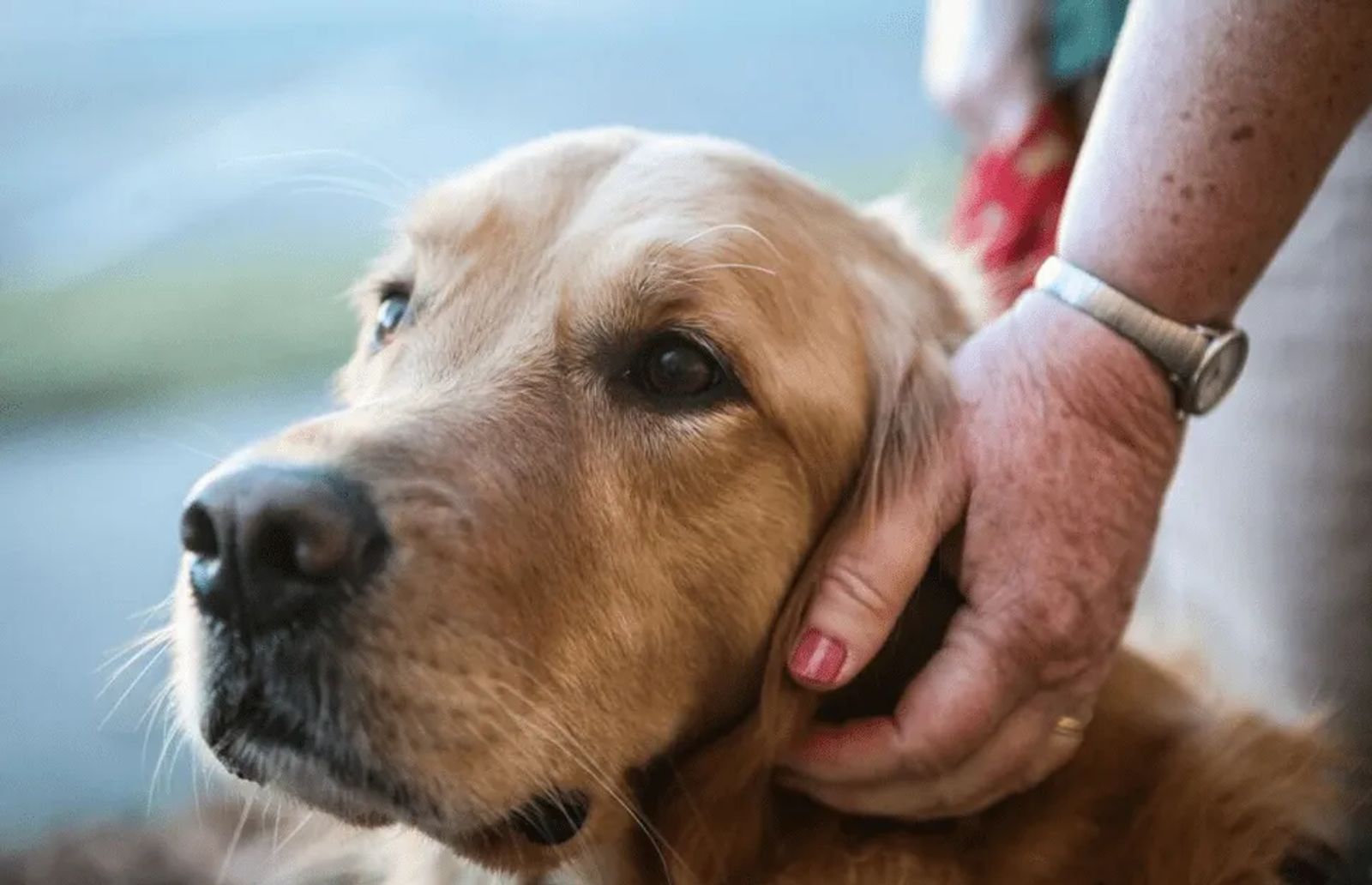
Martin says HOPE dogs are trained to recognize and respond to a particular smell that humans emit during periods of elevated stress.
“They learn to work with those individuals who are most stressed. Working with them means they like to be in their space, they like to be petted and touched and talked to or cried on,” Martin says. “I’ve actually seen where some of our dogs who have more experience will actually go past certain people and then they’ll get to one person and go, ‘you need me, so I’m going to sit down next to you.’ It’s really cool to see that.”
To learn more about Hope Animal Assisted Crisis Response, visit their website HERE. You can also page them in the event of a crisis 24/7 at 406-556-3716.
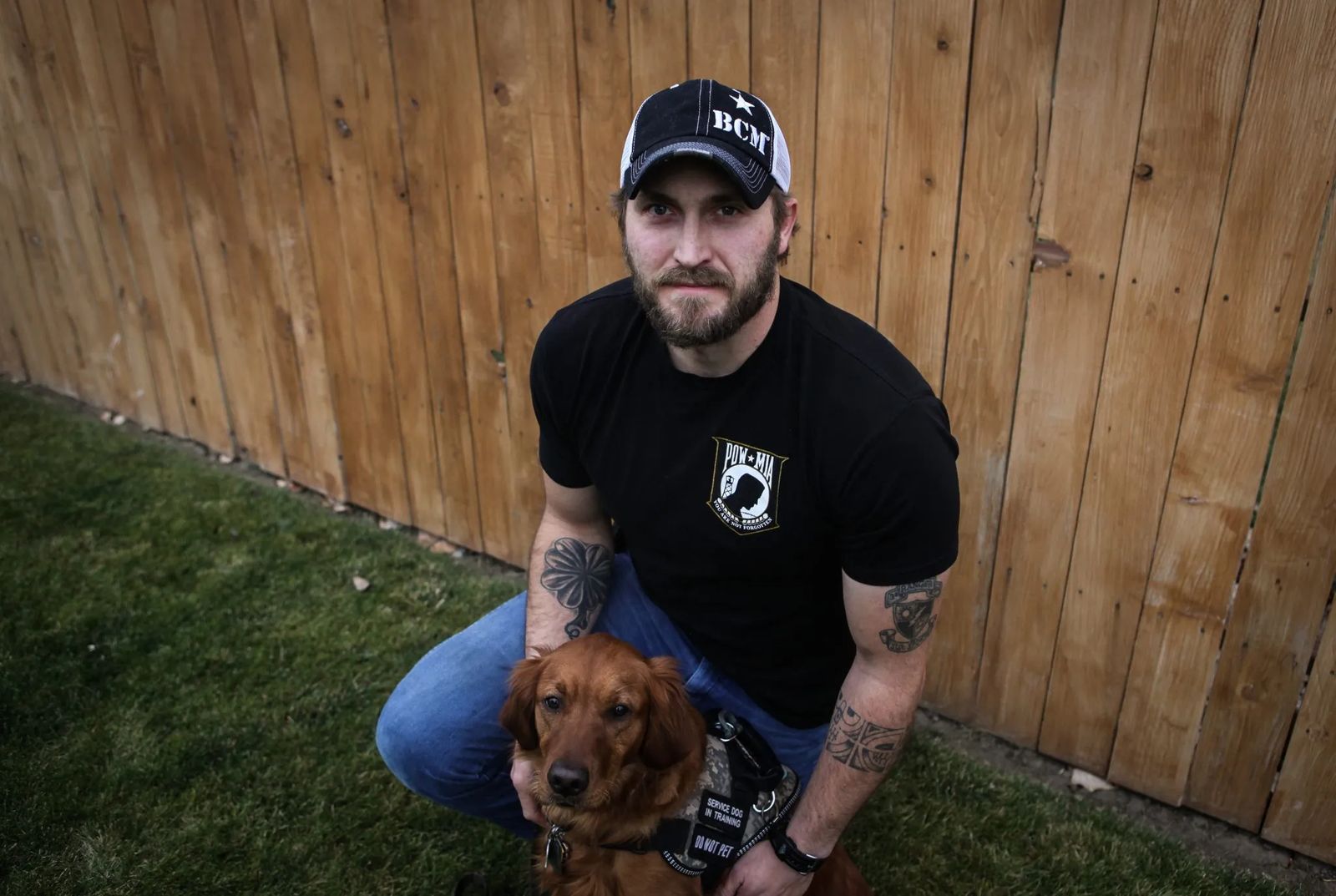
K9 CARE OF MONTANA
Army Ranger Matt Drinkwalter has a new battle buddy.
She jumps in his lap when the anxiety becomes unbearable and drapes a paw over his arm while he drives.
While he works in the garage, she keeps an eye on the street, alerting him to any incoming traffic.
When the nerve damage in his legs causes him to fall, she is there next to him, bracing herself so he can pull himself up.
She is his service dog and her name is Liberty.
The golden retriever is one of hundreds of dogs provided to wounded warriors and autistic children by K9 Care of Montana. The non-profit trains dogs for qualified recipients at no cost to them. Canines are given to recipients as puppies, and then returned to the organization for periodic training sessions until they master the appropriate service skills. For wounded warriors like Matt, canines help to ground them and ease anxiety.
Matt enlisted in the Army’s delayed entry program on 9/11 and after two-and-a-half years in the service, was medically separated. He sustained knee and back injuries as well as a traumatic brain injury. Matt also came home with Post Traumatic Stress Disorder (PTSD), which led to seven years of inner turmoil. Not unlike many other veterans with PTSD, he coped with his stress by drinking, gambling or disappearing into the mountains.
“We were so high-strung in my job… We dealt with counter terrorism, deep recon, and airfield seizure … so I carried that over into my life now where even to this day I have a hard time letting it go,” Matt says. “I think we both started bawling when we found out that Liberty got accepted (for training). Because with PTSD your daily life is hyper vigilance, anxiety, panic attacks, flash backs, a short fuse on anger – so many factors.”
Matt’s wife, Darci, says Liberty is there for her husband both physically and mentally.
“There’s been times when he’s having a nightmare … where I get hit or there was one time when he actually threw me off the bed he was in such nightmare, he was telling me to be quiet so that they wouldn’t hear us,” Darci says. “It was pretty intense. So, she helps with that. She’s a good one.”
They hope to train Liberty to flick the light switch on and off by the last phase of her training.
Matt says Liberty provides comfort that humans — even family — cannot.
“There’s no asking why. There’s no judging, no what’s wrong with you? They’re there for you,” he says. “Every veteran should have the ability to have a service dog.” Fellow Army veteran, Luke Walker, also touted the benefits of receiving a service dog through K9 Care of Montana.
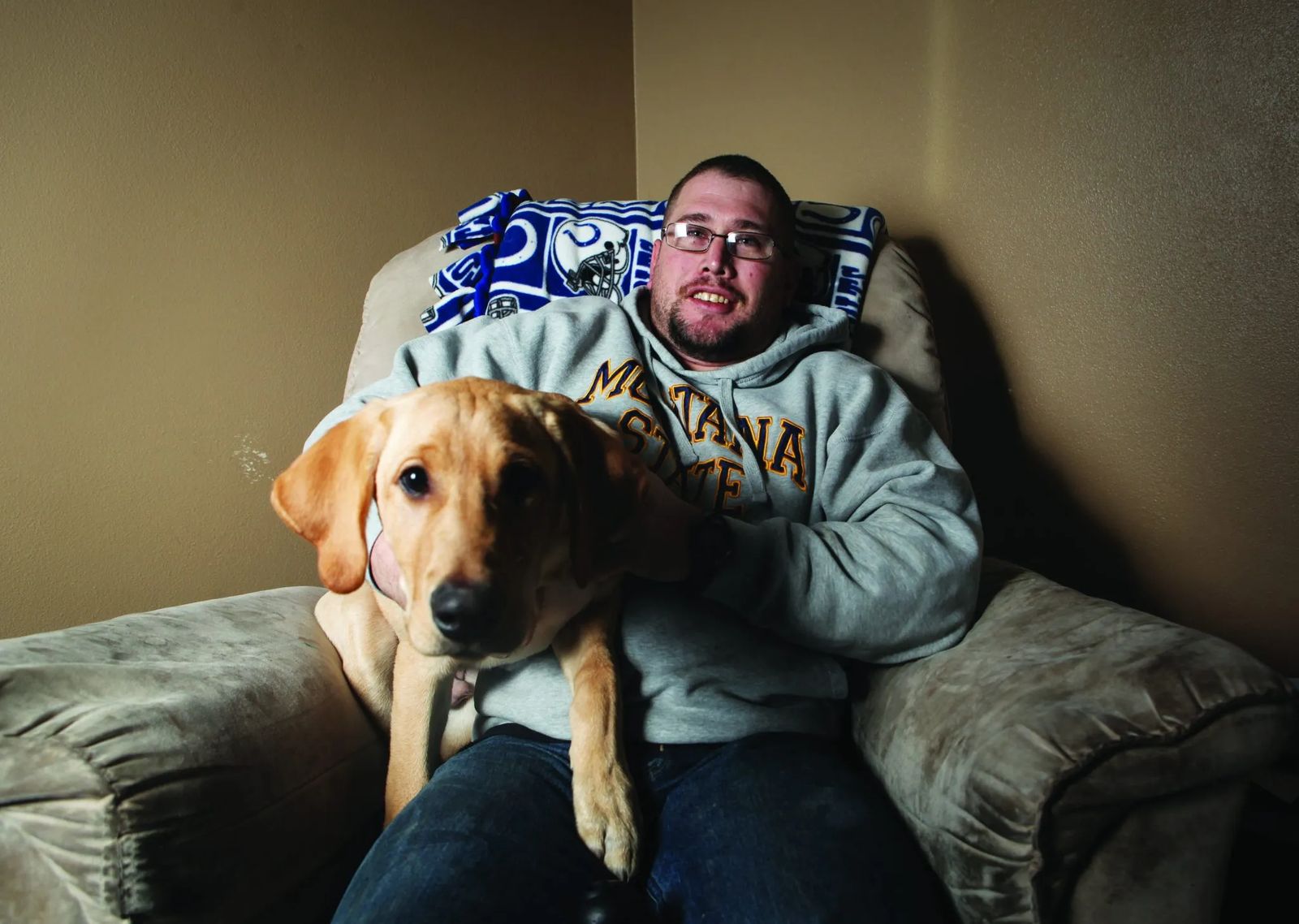
“That’s what a lot of veterans are missing is the camaraderie, the brotherhood. If you can find that, then you seem to do alright,” Walker says.
To make a good service dogs, the animals have to be treated differently than regular family pets. For example, to insure they bond with the veteran, only the veteran can play fetch with the dog. Games that may promote aggression, like tug of war, are also forbidden, as is “people food” so the dogs do not beg when out at restaurants.
Both Walker and Matt note that while they are happy to receive a service dog, they hope the public will learn to respect their privacy when encountering them.
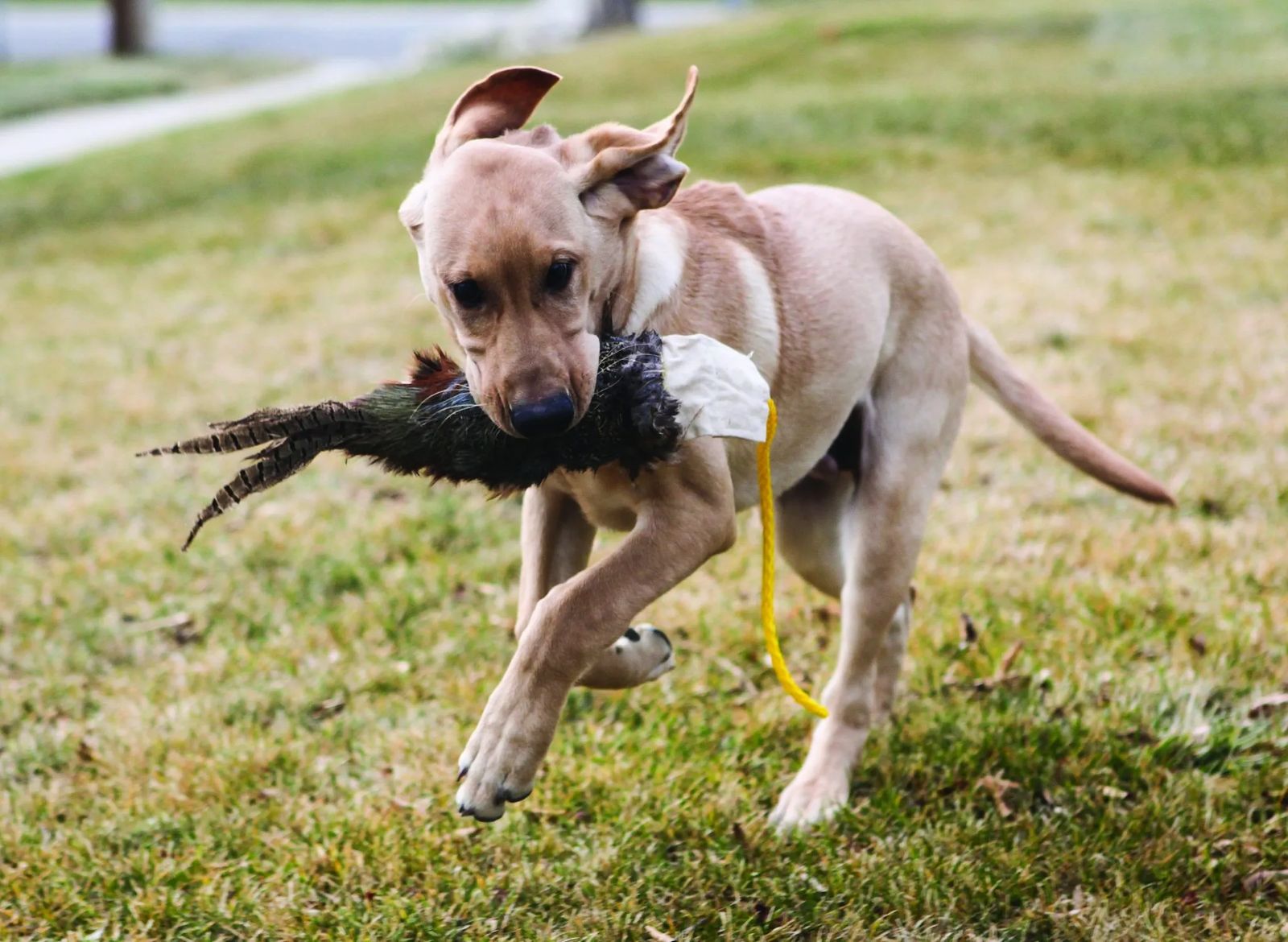
“You wouldn’t walk up to somebody with a cane and go, ‘Oh, what’s wrong with you?’ Don’t walk up to somebody with a service dog and be like, why do you have a service dog?” says Walker’s wife, Lisa. “They should just really understand that this dog is working and keeping that vet grounded,” Matt adds. “They’re part of a tool of therapy to help the veteran get back their life.”
To learn more about K9 Care of Montana, visit the organization's website HERE.

















